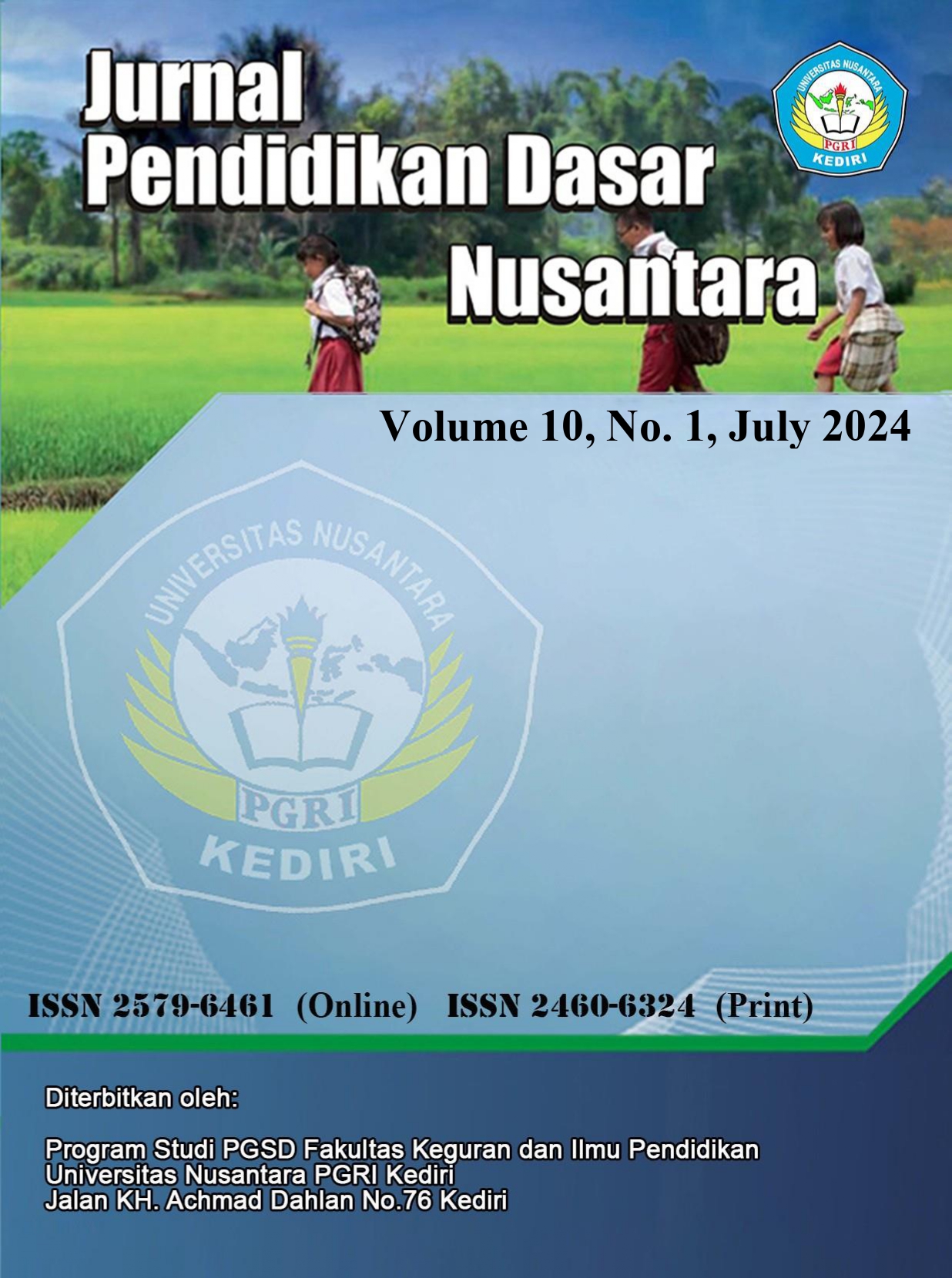Implementation of Inquiry Method in Science Subject to Improve Learning Outcomes of Second Grade Elementary School Students
DOI:
https://doi.org/10.29407/jpdn.v10i1.22577Keywords:
Inquiry Method, Learning OutcomesAbstract
Natural and Social Sciences (IPAS) should be a vehicle for students to study the natural surroundings and then apply it in everyday life so that students' learning experiences are meaningful. However, in reality, IPAS learning at UPT SD Negeri 144 Gresik is still teacher-centered and does not involve students in the teaching and learning process so that students do not understand the material, so that student learning outcomes are low. Based on the background of the problem, the researcher uses the inquiry learning method to improve student learning outcomes. The purpose of this study is an effort to improve the learning outcomes of grade II elementary school students in the subject of IPAS on energy sources. The subjects of this study were students in grade II of UPT SD Negeri 144 Gresik. The research method uses Classroom Action Research (CAR), with a CAR cycle model consisting of planning, implementing actions, observing, and reflecting. From the test results that have been conducted, the following data were obtained: The learning completion of class II students of UPT SD Negeri 144 Gresik increased by 47.56% from 40.9% (pre-cycle) to 88.46% (cycle II), and the average student learning outcomes increased by 24.23% from 58.84 (pre-cycle) to 83.07 (cycle II) after using the inquiry method. Based on the test results obtained during the study, it can be concluded that the inquiry method can improve the learning outcomes of class II students at UPT SD Negeri 144 Gresik.
Downloads
References
Arikunto, S. (2014). Prosedur Penelitian Suatu Pendekatan Praktek. Jakarta: Rineka Cipta.
Arin, D. A., Gianistika, C., & Rahmat. (2019). Penerapan Pendekatan Inkuiri untuk Meningkatkan Hasil Belajar Studentdalam Pembelajaran IPA di Sekolah Dasar (Penelitian Tindakan Kelas pada StudentKelas V SDN Rengasdengklok Selatan II). Jurnal Tahsinia, 1(1), 25-37.
Fanani, A. (2014). Mengurai Kerancuan Istilah Strategi dan Metode. Jurnal Pendidikan Islam, 8(2), 171-192.
Faradita, M. N. (2017). Pengaruh Model Pembelajaran Kooperatif Tipe Course Review Horay Terhadap Motivasi Belajar StudentMata Pelajaran IPA di Sekolah Dasar. Elementary School Education Journal, 1(2b), 185-192.
Gulo, H., & Waruwu, T. (2022). Pengembangan Modul Berbasis Inkuiri Pada Materi Pencemaran. Educatum: Jurnal Ilmu Pendidikan, 1(1), 13-22. doi:https://doi.org/10.56248/educatum
Harahap, N. (2023). Peningkatan Hasil Belajar Matematika StudentMenggunakan Metode Inkuiri di Kelas V MIN 1 BATAM. Primary Education Journal, 7(2), 49-52.
Nabiilah, T., & Abadi, A. P. (2020). Faktor penyebab rendahnya hasil belajar siswa. Prosiding Seminar Nasional Matematika dan Pendidikan Matematika. 2, hal. 659-663. Prosiding Sesiomadika. Diambil kembali dari http://journal.unsika.ac.id/index.php/sesiomadika
Rositawati, D. N. (2019). Kajian berpikir kritis pada metode inkuiri. Prosiding SNFA (Seminar Nasional Fisika Dan Aplikasinya), (hal. 74-84).
Sari, P. M., & Sumarli. (2019). Optimalisasi Pemahaman Konsep Belajar IPA StudentSekolah Dasar. Journal of Educational Review and Research, 2(1), 69-76.
Sudjana, N. (2017). Penilaian Hasil dan Proses Belajar Mengajar. Bandung: Remaja Rosdakarya.
Wardhani, I. (2017). Penelitian Tindakan Kelas. Banten: Universitas Terbuka.
Widyawati, A. (2022). Penerapan Metode Inkuiri dalam Meningkatkan Hasil Belajar IPA. Jurnal Pembelajaran dan Ilmu Pendidikan, 2(4), 555-573. doi:https://doi.org/10.28926/jpip.v2i4.599
Yasmini, N. M. (2022). Metode inkuiri terbimbing untuk meningkatkan hasil belajar IPA Studentkelas V. Journal of Education Action Research, 6(1), 73-79.
Downloads
Published
Issue
Section
License
Authors who publish with this journal agree to the following terms:
- Copyright on any article is retained by the author(s).
- The author grants the journal, the right of first publication with the work simultaneously licensed under a Creative Commons Attribution License that allows others to share the work with an acknowledgment of the work’s authorship and initial publication in this journal.
- Authors are able to enter into separate, additional contractual arrangements for the non-exclusive distribution of the journal’s published version of the work (e.g., post it to an institutional repository or publish it in a book), with an acknowledgment of its initial publication in this journal.
- Authors are permitted and encouraged to post their work online (e.g., in institutional repositories or on their website) prior to and during the submission process, as it can lead to productive exchanges, as well as earlier and greater citation of published work.
- The article and any associated published material is distributed under the Creative Commons Attribution-ShareAlike 4.0 International License

































